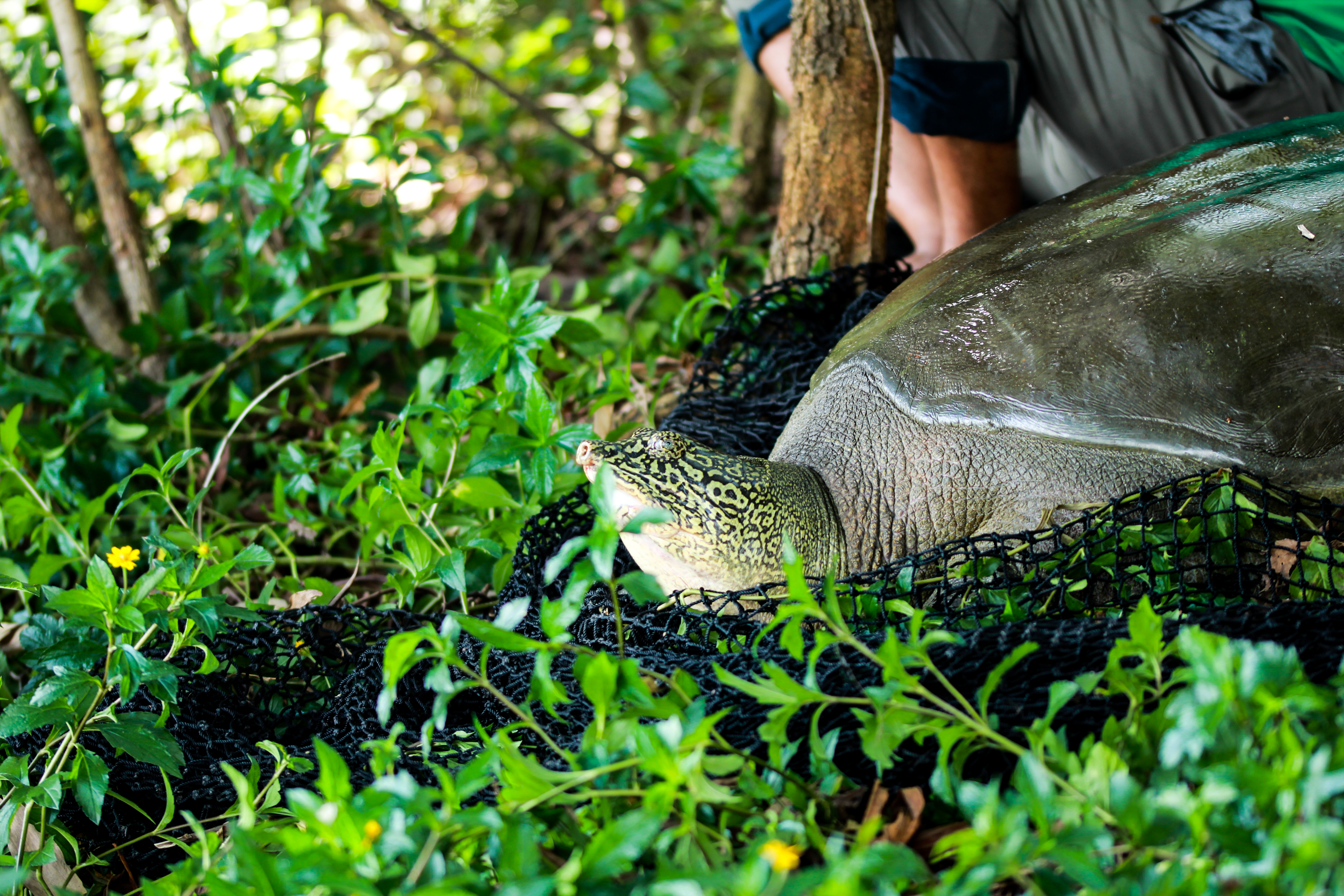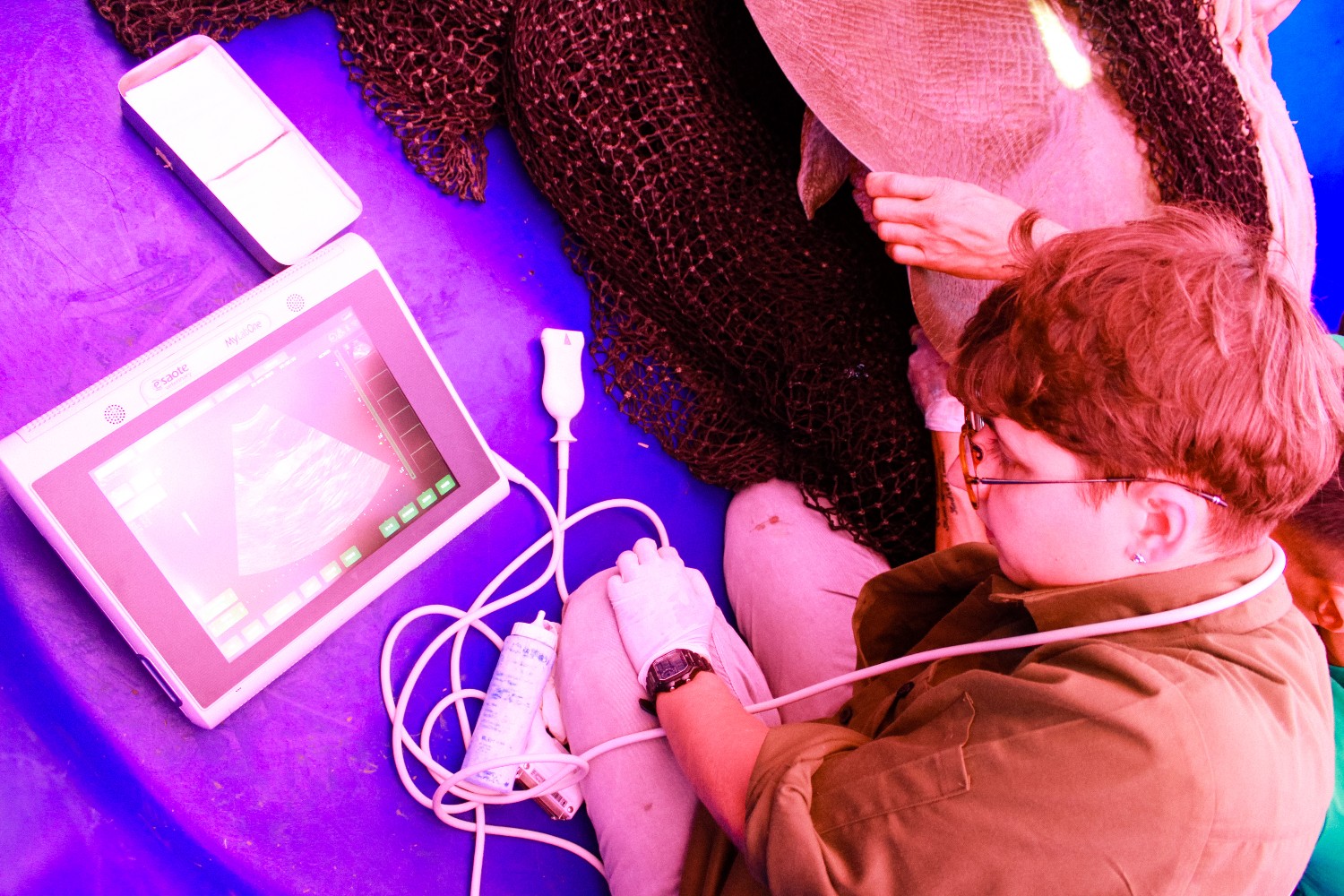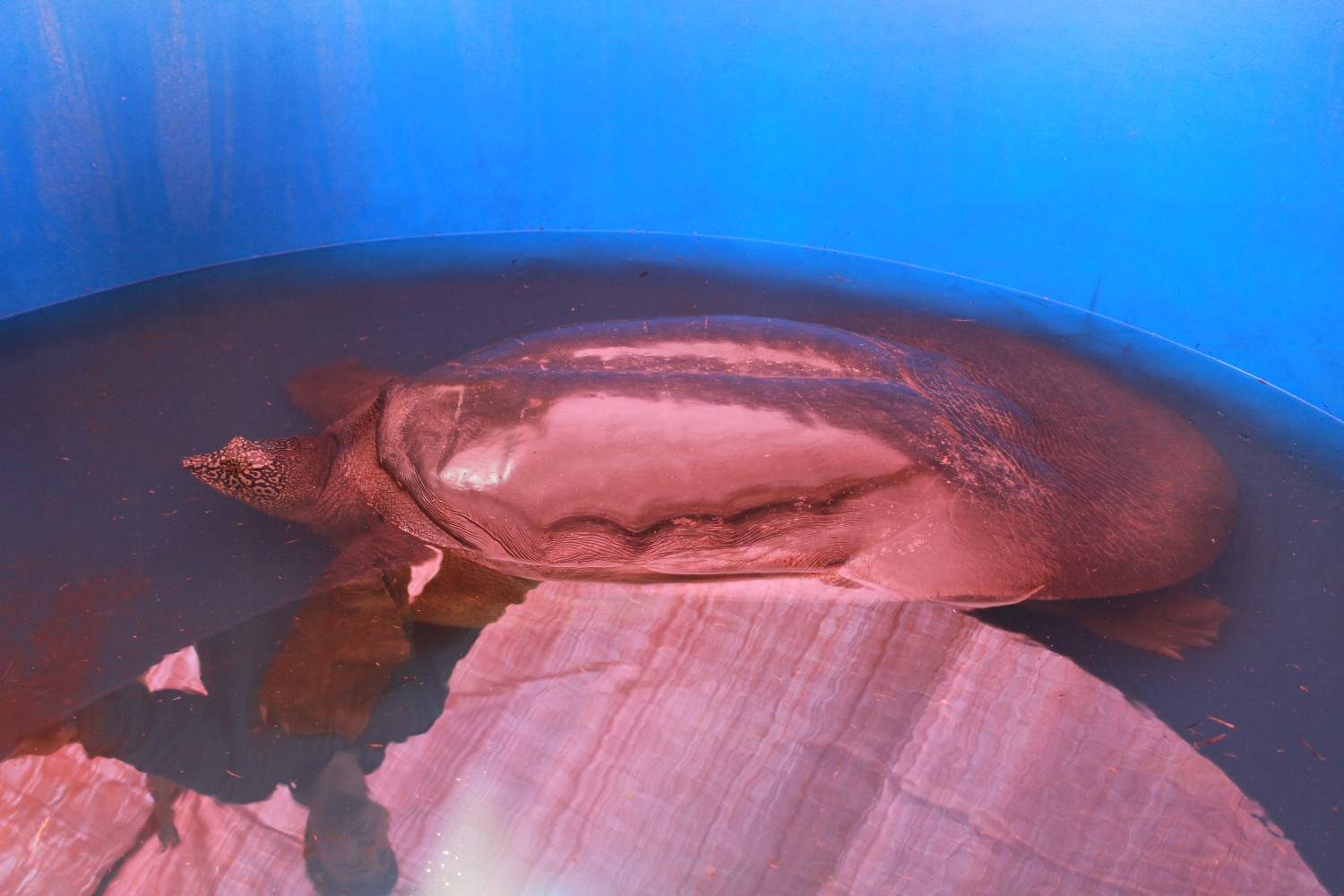World’s Rarest Turtle Could Be Saved After Conservation Detective Work in Vietnam
January 7, 2021Conservationists and experts in Vietnam recently announced what amounts to a miraculous find: a female Swinhoe’s softshell turtle.
This is potentially species-saving news, as the only other confirmed remaining Swinhoe’s turtle in the world is a male at the Suzhou Zoo in China. The critically endangered species is the largest freshwater turtle, weighing up to 220 pounds and measuring over three feet in length. They can live for up to a century, but population numbers have been decimated by habitat destruction and hunting in China and Vietnam, their historic distribution areas.
The huge, dark-green turtle was captured in Dong Mo, a large artificial lake 30 miles west of the capital Hanoi, in October. She was released back into the water after being examined and tagged with a microchip.
The species has a legendary status in Vietnam connected to a 15th century tale about the emperor Le Loi, who is said to have received a magic sword from the Golden Turtle God to battle invading Chinese forces.
After the Chinese were defeated, Le Loi was on a boat in a lake in what is today central Hanoi when a huge turtle surfaced, took the magic sword, and returned to the murky depths. The emperor named the body of water Hoan Kiem, or Lake of the Returned Sword. It is now one of the Vietnamese capital’s most popular destinations for both tourists and residents.

In January 2016, the last Swinhoe’s Softshell Turtle in Hoan Kiem was found dead by city employees, saddening residents who came to know it as “cụ rùa,” or “great grandfather turtle.”
Conservationists, however, held out hope that other members of the critically endangered species remained elsewhere in Hanoi’s many lakes. Back in 2007, the Asian Turtle Program of Indo-Myanmar Conservation (ATP/IMC) photographed one in Dong Mo Lake, and rescued and returned a turtle that had escaped from the lake in 2008. By comparing head markings, conservationsists determined that this was the individual captured in October in an effort to determine its sex.
Now experts are discussing ideas for uniting the turtles from Vietnam and the Chinese zoo in a feat of diplomatic conservation.
“Of the greatest importance is the bringing of animals together for breeding,” said Timothy McCormack, program director of ATP/IMC. “The October 2020 work is critical for this; we need to know the sex of animals we have and, given a male and female, provide the environment and opportunity for them to breed.”

In 2019, scientists attempted to breed the male Swinhoe’s turtle at the Suzhou Zoo with what was then the only known remaining female turtle through artificial insemination, but the female died while recovering from anesthesia, dealing a huge blow to conservation efforts.
McCormack also believes that other specimens remain to be captured and examined around Hanoi.
“We have a second site near Hanoi, Xuan Khanh Lake, where eDNA suggests we have another Rafetus,” he said, using the scientific classification for the species. “Any additional animals being confirmed is massive news; we need all the animals we can get.”
eDNA, or environmental DNA, is genetic material taken from environmental samples such as soil, sediment or water and can help biologists determine whether a given species may be present in an area.
McCormack added that this year, ATP/IMC and its partner organizations hope to find the turtle in Xuan Khanh, and continue their search efforts elsewhere.
“We have completed interview surveys throughout nearly all provinces in northern Vietnam with a focus on this species, and since 2003 we have identified dozens of historic sites, some of which had animals hunted in the 1980s and 1990s,” he said. “A few sites have more recent interview accounts describing what could be surviving Rafetus.”

Ben Rawson, conservation and program development director at WWF-Vietnam, said that the confirmation of the Dong Mo turtle’s gender is incredibly good news, but much remains to be done.
“While they are a very long-lived species, additional work needs to be fast-tracked to avoid risk of loss of the species,” he said in an email. “It is imperative that reports of other animals in lakes around Hanoi are confirmed to determine opportunities for breeding, and parallel discussions need to be had with Chinese authorities for a potential ex-situ breeding program with the individual currently in captivity in China.”
McCormack said that such work is ongoing, with efforts spurred by the knowledge that there is now a known male and female pair.
“We need to develop a plan to bring them into a situation where they can breed, most likely involving the movement of some animals,” he said. “Provision of an artificial nesting area would be needed, as the historic nesting site for this species was most likely riverbanks while, due to habitat fragmentation, we are seeing most surviving animals trapped in manmade lakes.”
If such breeding proves successful, Vietnam’s iconic turtle species may make it to another century.
“As a Vietnamese person, I am very happy to see that there is a possibility for our legendary turtle species to live on,” said Ha Hoang, Vietnam Turtle Program Coordination at ATP/IMC.
